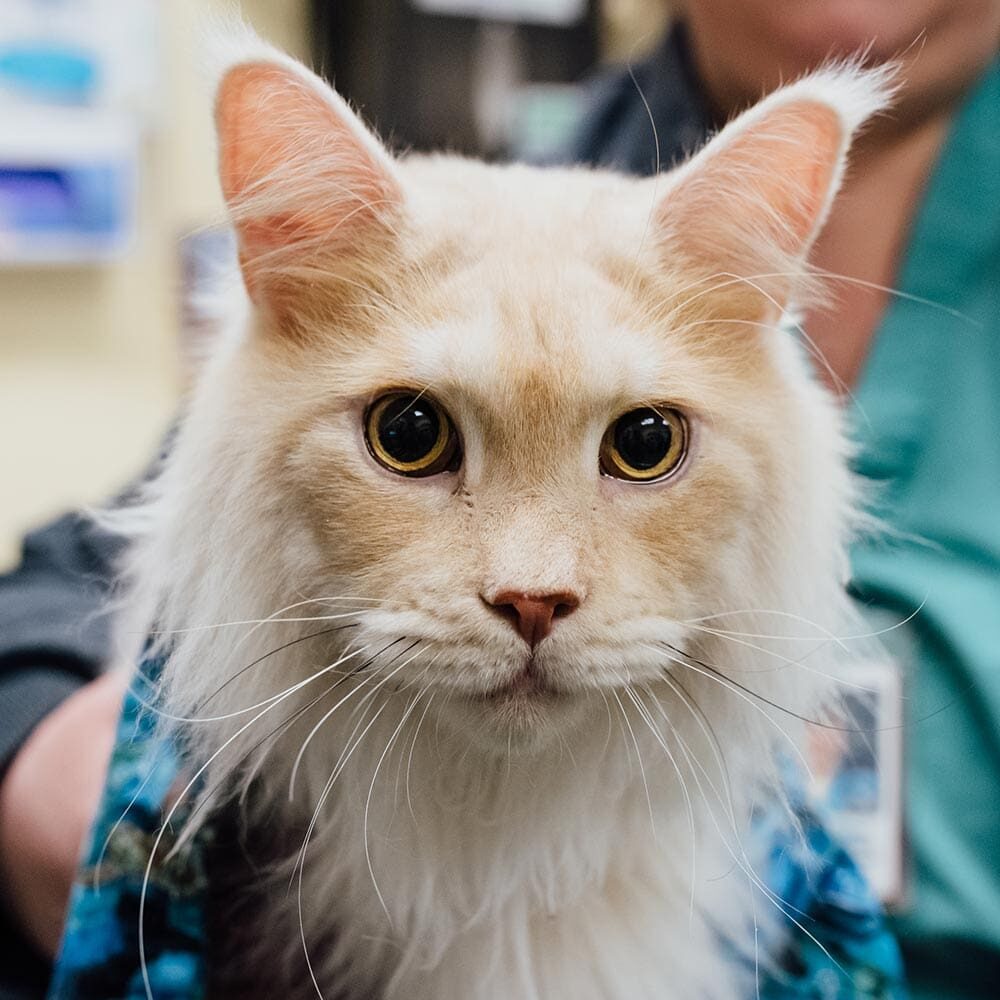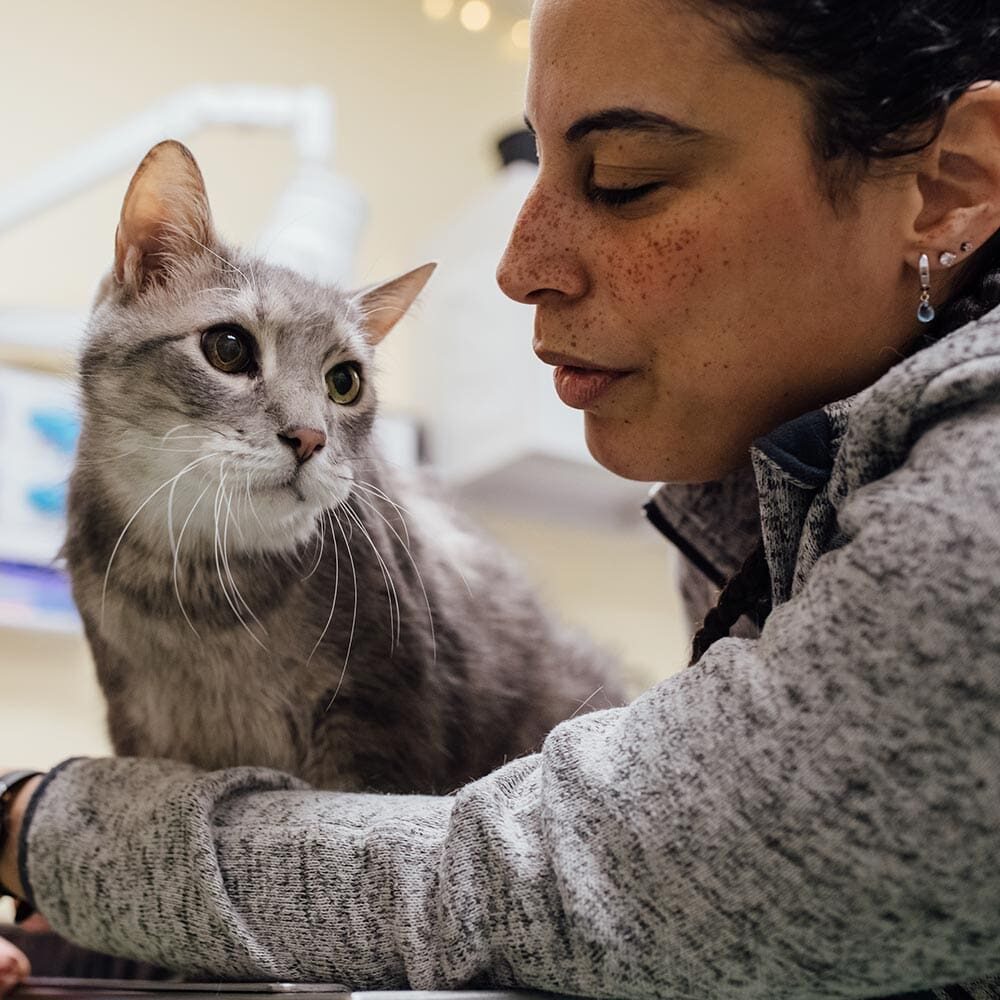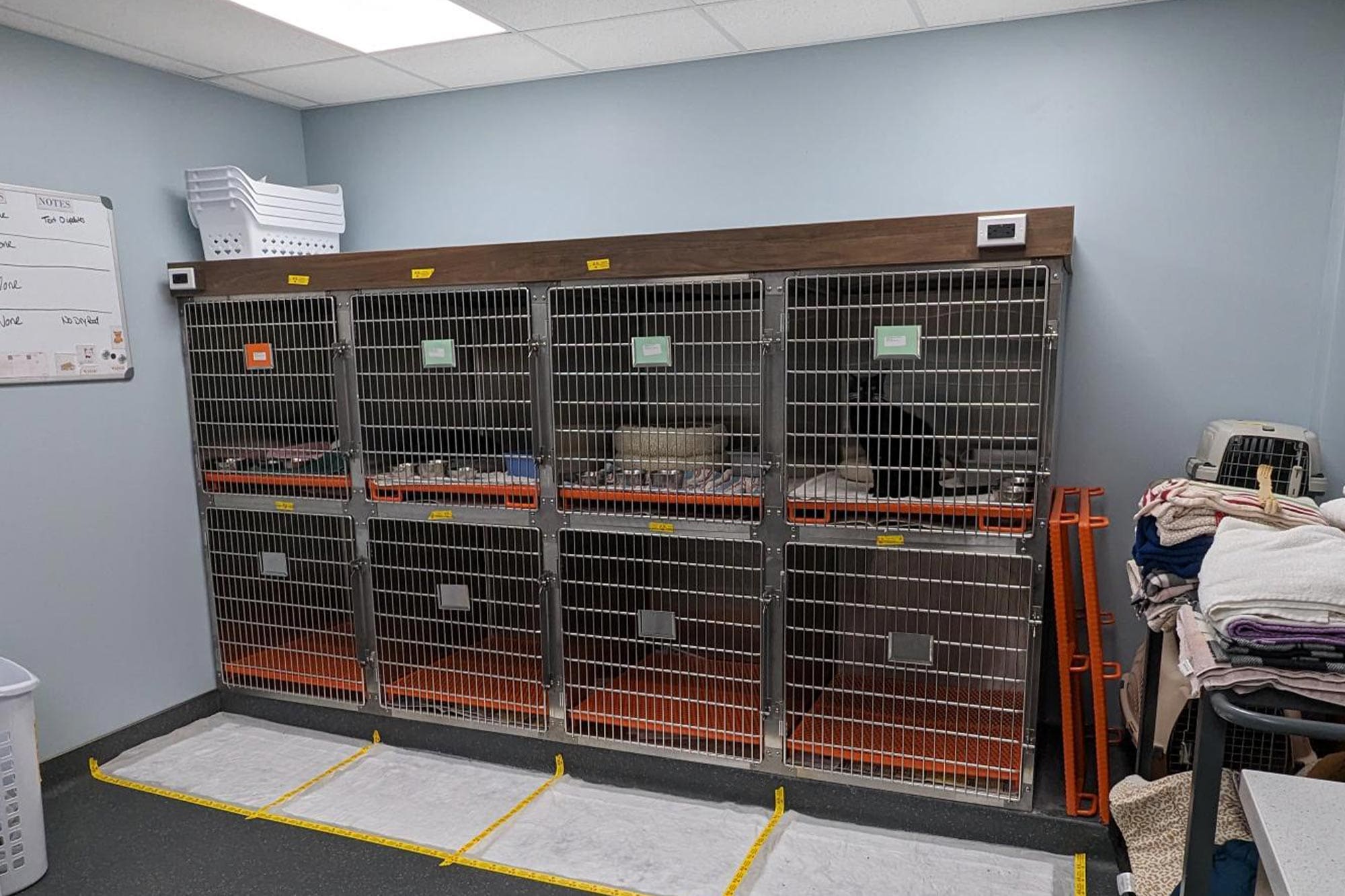The Veterinary Imaging Services (VIS) provides iodine-131 treatment (I-131) for cats suffering from hyperthyroidism and thyroid carcinomas as an alternative to thyroid gland surgery. Radioiodine therapy is the least invasive, safest, and most effective way to treat hyperthyroidism in cats. It avoids the inconvenience of daily oral administration and side effects associated with anti-thyroid drugs (such as Methimazole), as well as the risks and postoperative complications associated with anesthesia and surgical thyroidectomy.
More than 95% of cats will be cured by a single injection. Cats that still have elevated thyroid levels after I-131 treatment can be safely treated a second time if the thyroid levels remain high at least six months after the first injection. A very small percentage of cats may become permanently hypothyroid after I-131 treatment and will need to be on a lifelong thyroid supplement.
The I-131 is absorbed and metabolized by the hyperactive thyroid tissue only (even ectopic tissue) and destroys the abnormal hyperfunctioning thyroid cells. The normal cells are suppressed by the hyperactive tissue; therefore they don’t uptake the I-131 and are spared. The I-131 does not travel more than 3 mm in tissue so adjacent structures are not affected. Normal thyroid levels are usually reached within 1-3 months post-treatment.


Procedures
Pre-Referral Protocol
A thorough physical exam, complete bloodwork including complete blood count (CBC), chemistry, T4, 2-view thoracic radiographs, and a urinalysis will be required within one month of admission. If any underlying cardiac abnormalities are detected, further workups using electrocardiography (ECG) or echocardiography (EKG) may be necessary. Cats with renal failure or other chronic illnesses may not be the best candidates for I-131. If I-131 treatment is absolutely necessary, these patients should be stabilized as much as possible before treatment. In this way, we hope to avoid complications during hospitalization following the I-131 treatment.
Please note that thyroid medications should be stopped at least 2 weeks before the I-131 treatment date as well as the patient being off the Hills y/d diet for a minimum of 8 weeks.
The Procedure
Our protocol includes performing an imaging study of the thyroid before proceeding with the I-131 therapy. Not only will the scintigraphic study confirm the diagnosis of hyperthyroidism in cats that do not have a palpable thyroid nodule, but also in those cats that have had a relapse of hyperthyroidism after thyroidectomy. It will also evaluate for the possibility of ectopic thyroid tissue. The scintigraphic study is usually done under sedation.
The I-131 is administered as a subcutaneous injection. Due to the radioactive nature of the I-131, the patient is obligated to remain within the state-approved shielded facility at all times during the established days of hospitalization (approximately five nights).
Safety regulations do not allow any visitors in the treatment/housing area. Patients are monitored daily and owners are updated on a daily basis by a technician concerning their pet’s status. The referring veterinarian will receive a notification upon the patient’s release.


Post-Treatment Procedures (at Home)
At the time of release, the radiologist will meet with the owner and explain the post-treatment procedures. For the first two weeks following treatment:
-
Limit close contact (holding close to your neck, sleeping next to) with your cat to a maximum of 30 minutes per day per person.
-
Keep your cat indoors. Scoop urine and fecal clumps from the litter box twice daily. Use a flushable litter (We will provide one 10 lb. bag) and flush all clumps down the toilet, or keep all waste in a double-lined trash bag that can be disposed of after 80 days. If flushing the waste, be sure to avoid splashing and make sure the litter goes down after flushing.
-
Always wear latex gloves (VIS will provide) when handling your cat’s waste products and bodily fluids and when cleaning the litter box.
-
Place gloves and any objects that have been in contact with your cat’s urine or feces in a double-lined garbage bag in a remote area of the house away from children and other animals.
-
Keep minors (those under 18 years old) and pregnant women from coming into contact with (and being at least 3 feet away from) your cat or its waste. This includes when transporting your cat home after the I-131 treatment.
-
Keep your cat in a carrier during any transport to avoid contamination of your vehicle by your cat’s urine or feces. After this two-week period, you and your cat can resume normal activities and you may stop flushing waste products.


Follow-Up with Your Pet’s Primary Veterinarian
Normal thyroid levels are usually reached between one and three months (sometimes up to six months) post-treatment. More than 95% of cats will be cured by a single injection. The remaining small percentage of cats can be treated a second time safely if the thyroid levels remain high six months after the injection. Follow-up kidney values and T4 levels at 1, 3, 6, and 12 months are recommended. This can easily be done at the family veterinarian’s clinic.

